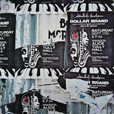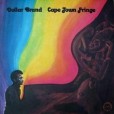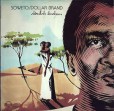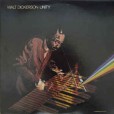Your basket is empty

Tarika Blue
The Blue Path
Chiaroscuro
Outstanding, spiritualised jazz-funk; keenly focussed but free and warm; steeped in post-bop and wide-open to r&b; somewhere between Lonnie Liston Smith’s Cosmic Echoes and Roy Ayers’ Ubiquity. Plenty here for dancers, chin-strokers and dreamers all.
The personnel discloses generous musical co-ordinates… Marvin Blackman from the Rashied Ali Quartet is here, and Ryo Kawasaki. James Mason and Justo Almario were later collaborators. Just a couple of years before this, Tarika Blue leader Phil Clendeninn was playing in a New York funk outfit alongside Nile Rodgers and Bernard Edwards…
Magnificent jazz from 1977 by this nonet including Don Cherry, Johnny Dyani — both top-form — Hamiett Bluiett and Roy Brooks. The grooving, rolling, side-long Hajj — with eastern-style oboe — is knockout.
The towering jazz landmark originally issued in South Africa in 1974 under the title Mannenberg Is Where It’s Happening. Recorded with Basil Coetzee, Robbie Jansen, Monty Weber and Morris Goldberg, the music protested the evictions underway from District Six, whereby ‘coloureds’ were murderously booted out to Mannenberg township (where Coetzee was from). The LP sold by the thousands within weeks, becoming South Africans’ unofficial national anthem.
“I’d had the experience of playing dance bands, African dance bands like the Tuxedo Slickers, and we played xhosa, American swing music, mbaqanga… I also played with coloured dance bands — waltzes, quick-steps, squares, paso doble, then also the traditional Cape music…”
An upfully ravishing, hypnotically danceable, rootsily syncretic, universal call to resistance.
Worth it just for the brilliant John Gilmore, from 1963. Boykins and Philly Joe in the house. We love Elmo, too — that’s him on Harold Land’s The Fox. Marcelle Daniels’ vocal version of Groovin’ High is a gem.
A moody, ambitious, intriguing record, originally released by Audio Fidelity in 1964.
Just two side-long tracks — and an amazing lineup, with Walter Davis on piano, bassist George Tucker, and two drummers together, Edgar Bateman and the great Andrew Cyrille.
The sleeve-notes quote a Downbeat article from the same year, claiming that Dickerson was the most important vibraphonist since Milt Jackson: ‘instead of solos made up of one related note following another, Dickerson often builds areas of sound, placing them one on the other, creating a total effect.’






